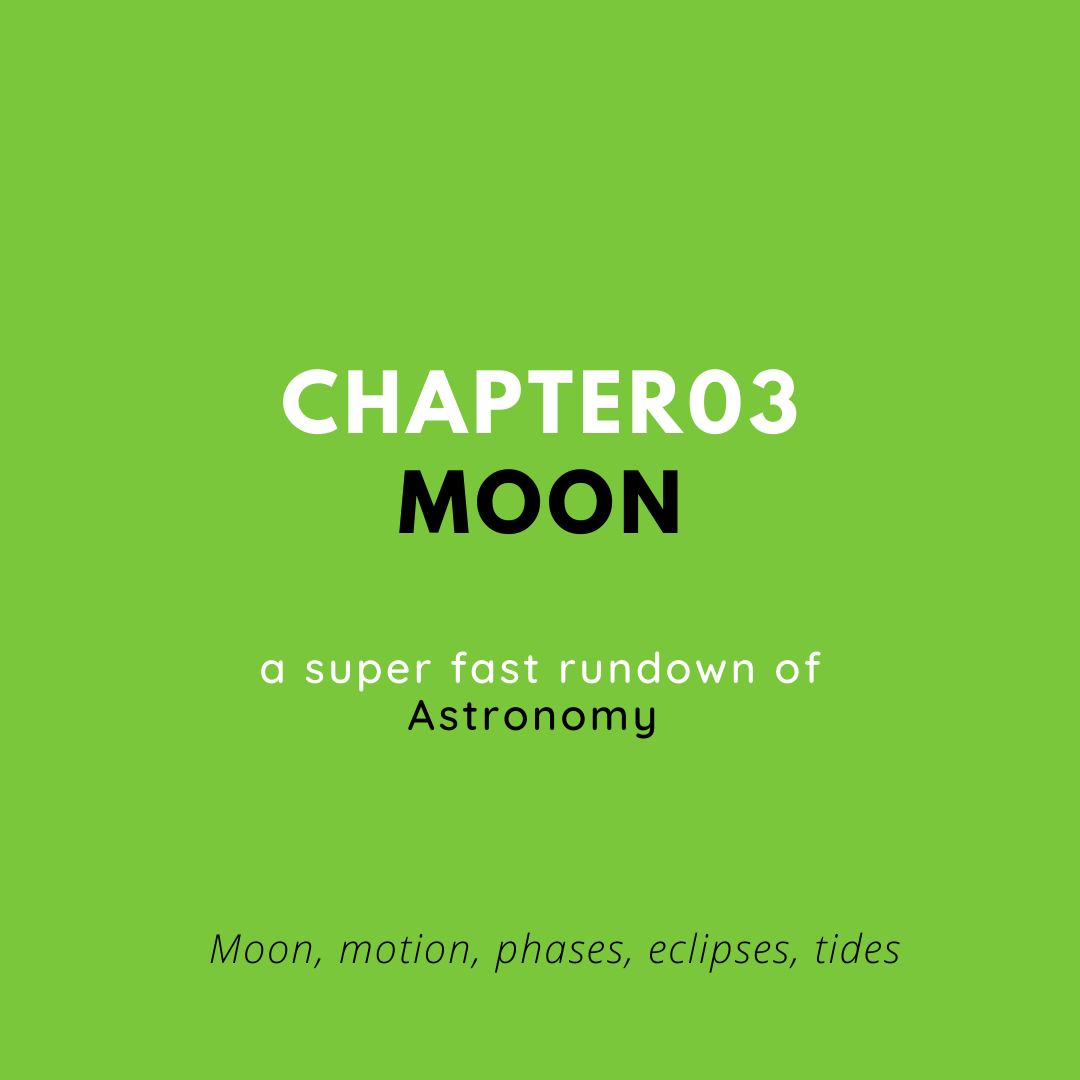Astronomy, part III : Moon.
A moon is any object that revolves around a planet. We often think of satellites as human-made objects in space, but the moon is a great example of a natural satellite that keeps orbiting because of the strength of Earth’s gravity.
Surface composition
Of course there’s the Little Man’s little house on the moon. The one that you can vaguely make out on a clear night. There’s also different kinds of surfaces that are sometimes similar to Earth: mountains, craters, and big regions of hard, smooth lava from volcanic eruptions.
The mountain areas are called the lunar highlands. The smooth lava areas are called maria.
Motion: rotation and revolution
The Earth is always moving, which means the Moon is always moving too. Every 27.3 days it completes a revolution around Earth. This is where the Moon gets really cool: ready?
Every 27.3 days the Moon makes a complete rotation.
To summarize: the Moon completes both a revolution and a rotation every 27.3 days. It revolves and rotates at the same speed, which means we see the same face of the moon constantly.
Phases
The Moon reflects sunlight, which is why it has that beautific and calming glow. Remember how we talked about the different hemispheres on Earth are always in different seasons? Same kind of deal with the moon. The sun is always lighting half of the moon, but because the moon and the earth are constantly moving, it’s a different part that we see lit every night.
These changes are called moon phases. They are dependent on the relative positions of earth, sun, and moon.
When the moon is getting larger each night, it’s called waxing.
When it’s getting smaller every night, it’s called waning.
There are eight phases:
New moon
Crescent (waxing)
First quarter
Gibbous (waxing)
Full moon
Gibbous (waning)
Third quarter (last moon)
Crescent (waning)
It takes 29.5 days to complete a cycle through all eight phases. This is called the lunar cycle.
Eclipses: solar and lunar
A solar eclipse occurs when the moon is between the Earth and the sun. The moon blocks light from the sun and casts a shadow on Earth - either a full or a partial shadow
A lunar eclipse occurs when earth is between the sun and the moon. When this happens, Earth throws its shadow on the moon. Some light still refracts through the Earth’s atmosphere, which makes the moon glow red. Cool. Oh, and there are three types: total, partial, and penumbral.
Eclipses are pretty awesome and a good reminder to pay attention because they don’t happen frequently. We can predict when they’ll happen though, so...heads up!
Tides
The Earth’s gravity pulls on the moon, which is what keeps it in orbit. But guess what? The moon’s gravity also pulls on Earth! This is what causes tides.
When I first heard this is a kid, it seemed crazy. Some sci-fi trick that an adult was trying to convince me was reality. But no. True thing!
So tides are the recurring rise and fall of the ocean’s water levels. The sides of Earth that are closest to the moon or directly opposite the side facing the moon experience high tides. In other words, the water is being pulled toward the moon.
This high tide point moves across Earth as it rotates. There are two high tides and two low tides every day as it rotates around, so the time between a high tide and the next low tide is approximately six hours.
Sun’s effect
When the Earth, moon, and sun are all lined up, the gravity of the moon and sun increases, which means we get - remember gravity’s effect on tides? Yep, more gravity means that high tides are higher and low tides are lower. We call these spring tides. Everything’s magnified.
When the the sun and moon are are 90-degree angles to each other (relative to Earth), the gravitational force is less, and we get what’s called neap tides. High tides are high, but not as high. Low tides are low, but not as low. Less variance.
